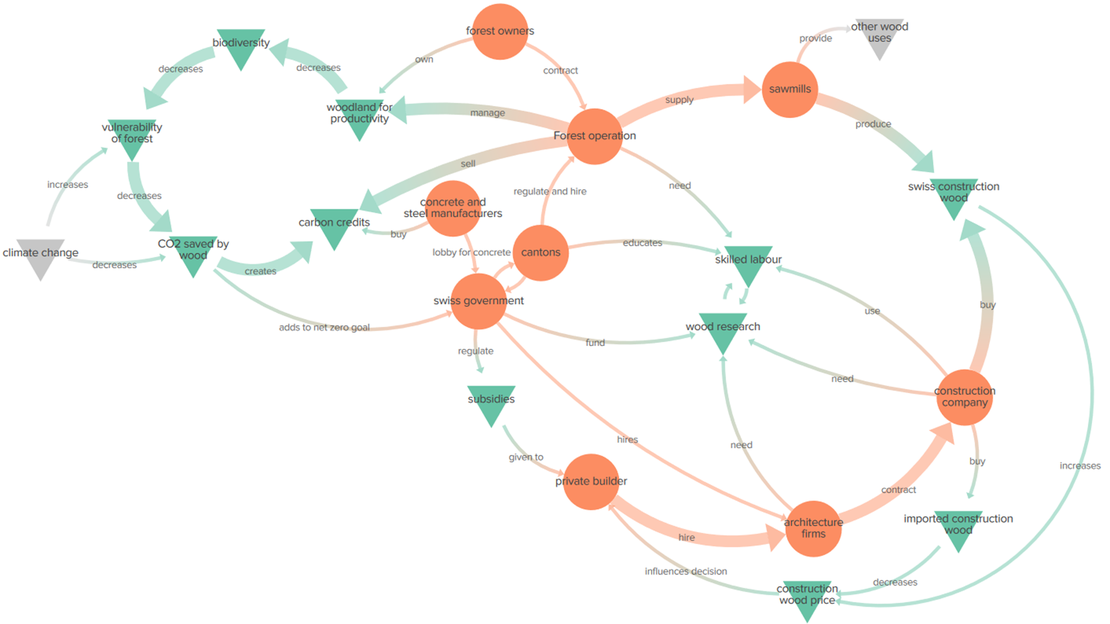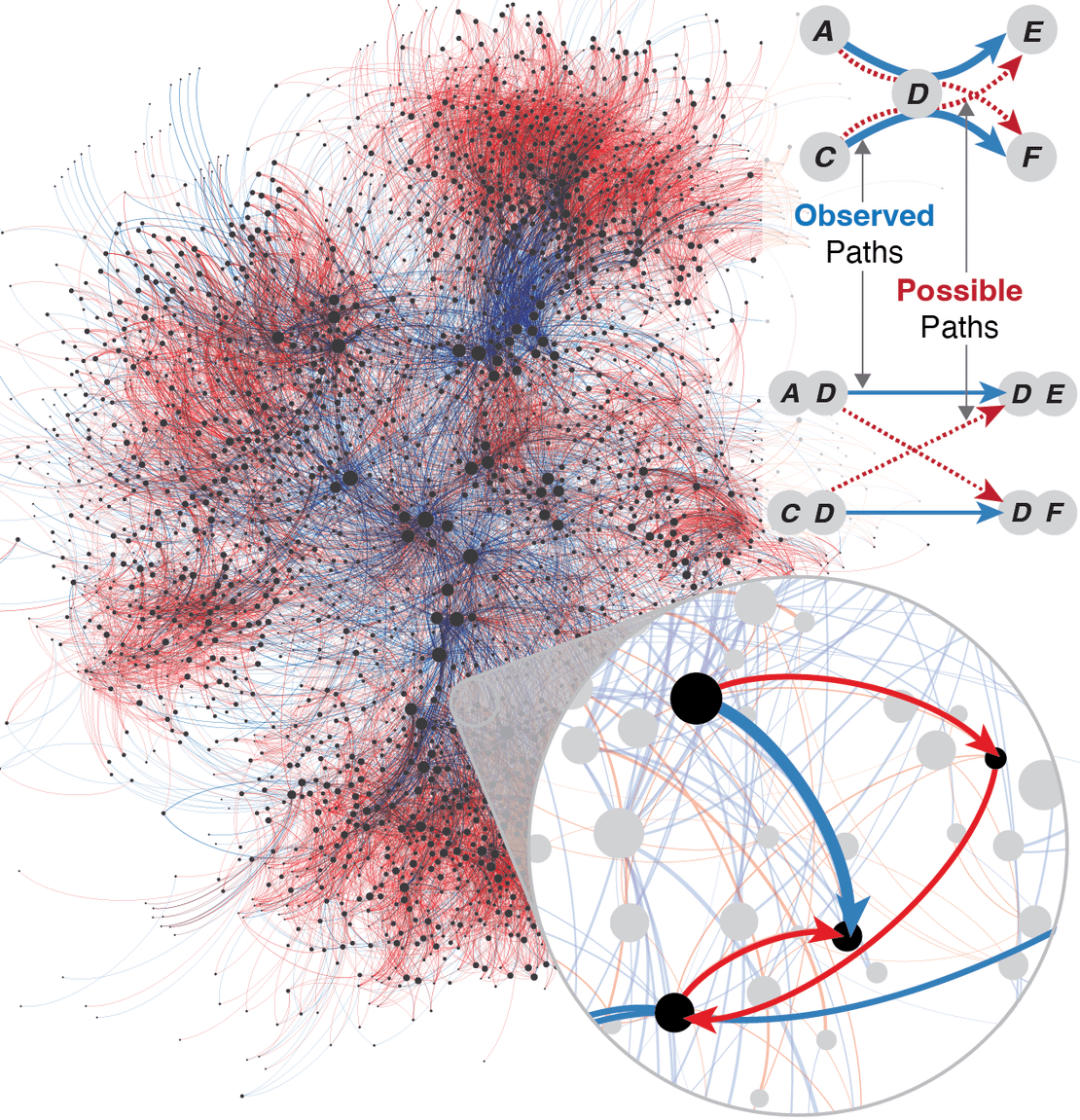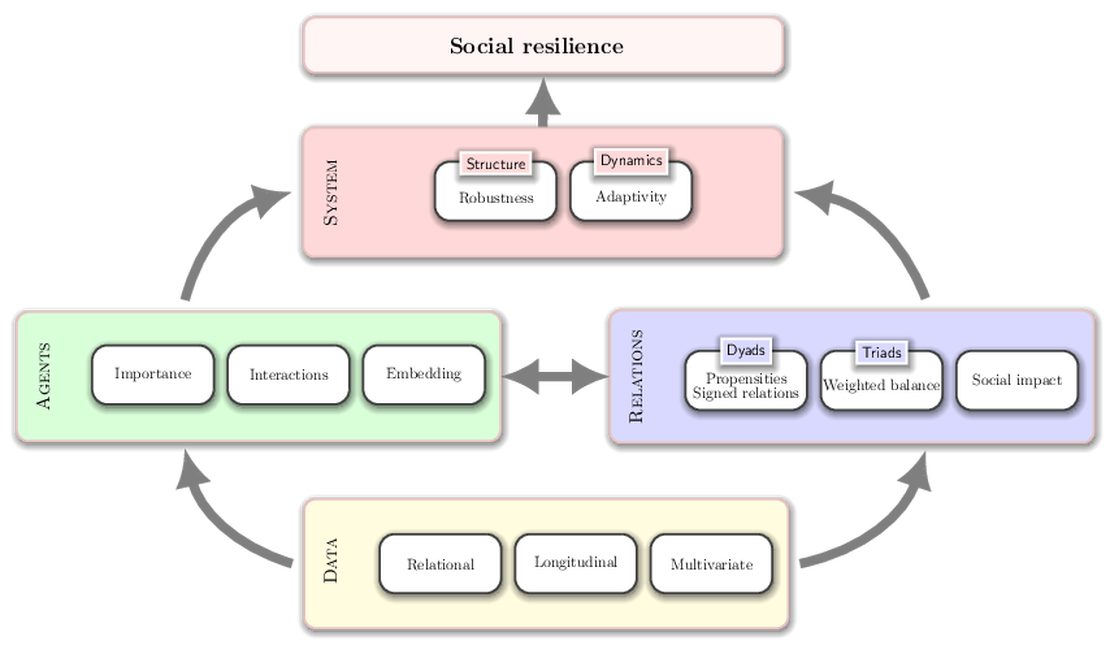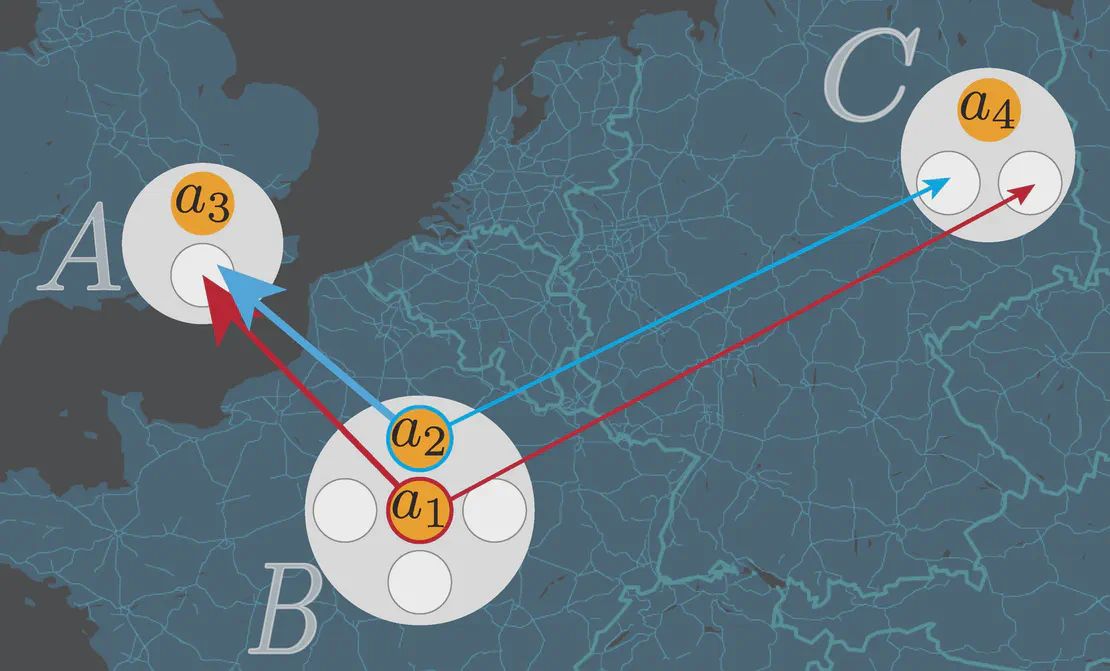
Understanding Complexity through Systems Approaches
- Giacomo Vaccario
- Courses , Supply chain
- February 9, 2025
Table of Contents
Abstract
The course focuses on developing system dynamic models for socio-technical transitions. With the practical case of upscaling the use of wood for construction, students will interact with stakeholders of the wood supply chain and model 1) their relations, 2) emerging non-linear dynamics (e.g., feedbacks and tipping points), and 3) trade-offs between economic, societal, and environmental benefits. Link to course on ETH catalogue.
Objectives
In this course, students will:
- Understand the theory of system dynamics modelling.
- Learn about the wood supply chain (from forest management to its use in construction) and its different stakeholders (such as forest owners, communities benefitting from the forest services, public institutions, sawmills, and construction companies).
- Learn to identify and model problems that require a cross-domain perspective, i.e., that are composed of economic, societal and environmental aspects.
- Develop SDMs and evaluate their utility.
Content
SDMs allow for capturing the non-linear relations among the elements of a system, identifying feedback loops, and making projections about the development of a system. It also allows modeling the relation of tangible assets (e.g., the product flows between two locations) to less tangible ones (e.g., preferences of economic actors in a product or its need). They are also a valuable tool to match both qualitative and quantitative understanding of a system.
Students will be introduced to the concepts behind SDMs in general, illustrated through the case of the wood supply chain. This supply chain is highly complex and touches the interests of very different stakeholders. These stakeholders are, for example, economic actors such as forest managers, sawmill owners, and construction companies. These stakeholders have different interests, interact with each other, and create a complex system whose properties cannot be understood by considering its elements separately.
The student will develop a system dynamic model (SDM) for the wood supply chain. With this model and the associated system understanding, students will identify problems arising from upscaling wood production for the construction sector and evaluate solutions. The students will be divided into three groups of four, and each group will be assigned a problem to focus on. This means they will iteratively refine the model presented during the first lecture. To do this, they will be introduced to programs (e.g., Kumu or Vensim) and methods to formalize and analyze SDMs. Moreover, they will have to integrate knowledge from publicly available resources, experts, and stakeholders into SDMs. This process will also allow them to learn about the participatory process in modeling a system and identifying problems. Finally, the students will present their models and compare them across groups. By this, they will develop the ability to evaluate SDMs and their usage.
Literature
- Churkina, G., & Organschi, A. (2022). Will a Transition to Timber Construction Cool the Climate?. Sustainability, 14(7), 4271
- Churkina, G., Organschi, A., Reyer, C.P.O. et al. Buildings as a global carbon sink. Nat Sustain 3, 269–276 (2020).
- Bertalanffy, L. V. (1968). General system theory: Foundations, development, applications. G. Braziller.
- Geels, F. W. (2004). From sectoral systems of innovation to socio-technical systems: Insights about dynamics and change from sociology and institutional theory. Research policy, 33(6-7), 897-920.
- Xie, S.H., Kurz, W.A. & McFarlane, P.N. Inward- versus outward-focused bioeconomy strategies for British Columbia’s forest products industry: a harvested wood products carbon storage and emission perspective. Carbon Balance Manage 16, 30 (2021).


